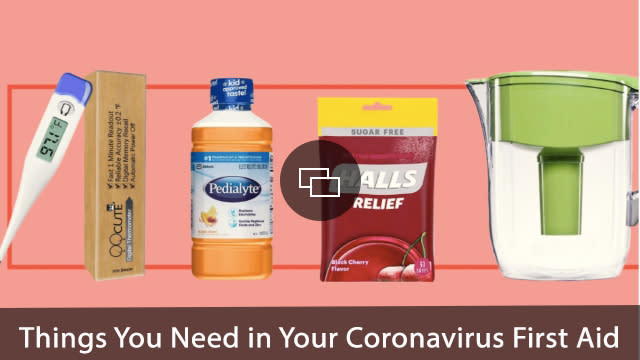CDC Just Shared Similarities of COVID-19 Symptoms & Allergies as Parents Prepare for Back to School

Amid the COVID-19 pandemic, school districts through the United States are adopting various learning models, including distance learning as well as new mask requirements and social distancing guidelines for in-person schooling. But even with precautions in place, it’s easy for parents to end up on high alert if their kid gets a cough or sniffles; symptoms that, in other times, would be normal parts of childhood now have parents (understandably) concerned about whether they’re indicators of the novel coronavirus. And with COVID-19 still spreading fast across the country, back-to-school has parents reaching new levels of anxiety this year. To complicate matters further, fall allergies season came early, because of course.
To put anxious parents everywhere a bit more at ease, the CDC has outlined some key differences between symptoms of the novel coronavirus and seasonal allergies. Here are the key facts to know — and the symptoms to really watch for.
Fever
Unlike a viral infection, allergies are a reaction to pollen or grass and tend to manifest as localized symptoms around the eyes, nose, and throat. One of the key differentiating factors is allergic infections rarely are associated with causing a fever.
Shortness of breath
According to the CDC, both allergies and COVID-19 can cause symptoms, including cough, sore throat, fatigue, headache, congestion, and runny nose. The international health organization clarifies that, while both ailments can result in shortness of breath or difficulty breathing, this is a primary characteristic of COVID-19 and only can be brought on by allergies in those with pre-existing respiratory conditions, such as asthma.
Loss of taste or smell
This is a known symptom of COVID-19. If your child experiences a new loss of taste or smell — or displays more flu-like symptoms, such as fever and chills, muscle and body aches, nausea, vomiting, or diarrhea — get them tested. And if you’re unsure, err on the side of caution, and notify the school that you’re taking precautionary measures and keeping your child quarantined.
Meanwhile, if your child has itchy or watery eyes plus sneezing, you’re likely in the clear. While sneezing has shown up in certain COVID-19 cases, histamine responses like itchy/watery eyes are a key sign of allergies and are not associated with coronavirus infections.
Don’t forget: The CDC recommends any child over the age of 2 should be wearing a mask indoors when other social distancing measures are not possible and should be washing their hands frequently and regularly disinfecting surfaces.
Before you go, check out all of the things you need in your Coronavirus First Aid Kit.
Launch Gallery: The Things You Need in Your Coronavirus First Aid Kit
More from SheKnows
Best of SheKnows
The 61 Best Kids Face Masks — From BaubleBar, Lilly Pulitzer & More
I Loved Being Homeschooled — But I Hate Homeschooling My Own Kids
Kids Toothbrushing Essentials to Trick Your Toddler Into Thinking It's the Most Fun
Sign up for SheKnows' Newsletter. For the latest news, follow us on Facebook, Twitter, and Instagram.


